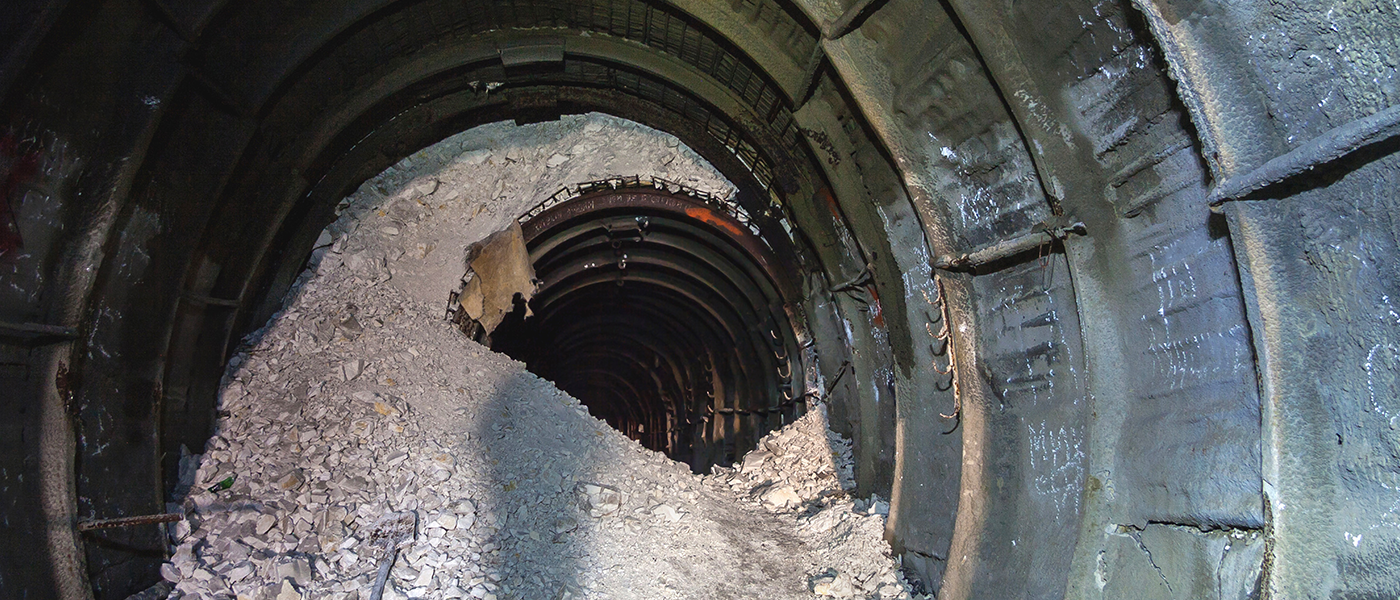No Need to Panic
Just the idea of any kind of incident at a facility housing nuclear material is enough to make most shudder. However, as with any unfortunate circumstance, not all are a cause for worry — at least not initially. Such was the case with an incident at the Hanford site in Washington State, where a portion of a tunnel housing nuclear waste contained in rail cars collapsed on Tuesday, May 9th.
The site was home to the Plutonium Uranium Extraction Plant (PUREX), which processed 70,000 tons of uranium fuel rods during its years of operation: 1956 to 1988. On Tuesday, some employees noticed a significant change in the topography of the site: a grassy area above the tunnel had sunk by more than a meter (about 4 feet). Precautions were taken and assurances were released saying there were no injuries, and that all the site's employees were accounted for. Additionally, the U.S. Department of Energy also stressed that there is no evidence of a radiological release.
Statement on the incident at DOE's @HanfordSite: pic.twitter.com/zfZkQJyLhd
— DOE Press Staff (@EnergyPressSec) May 9, 2017
Nuclear Stigma
Incidents like this could understandably conjure images of disasters like 3-Mile Island or Fukushima. However, these radiologic fears are often misplaced.
We saw this message trumpeted after Fukushima caused a ripple effect leading to temporary shutdowns of nuclear reactors around the world. In reality, even the most deadly of nuclear power disasters pales in comparison to the annual deaths caused by fossil fuel use. According to the Global Burden of Disease project, 5.5 million people worldwide are dying each year as a result of pollution caused by the burning of fossil fuels.
The biggest nuclear disaster thus far has been the Chernobyl disaster of 1986, which saw the deaths of 56 people directly attributed to the event itself, and additional 4,000 cancer deaths among those exposed to radiation as a result. While in no way intending to minimize the tremendous gravity of those losses, there are several mitigating factors that make fossil fuels a much bigger threat than nuclear power.
The most prominent factor is that nuclear disasters are outliers to the normal operation of plants. The last recorded fatality in the United States caused by an accident in a nuclear power plant occurred in 1961 when three people lost their lives after the explosion of a reactor in Idaho. Generating the deadly fine particulate matter that is responsible for millions of deaths each year is the everyday business for the fossil fuel industry.
James Hammitt of the Harvard Center for Risk Analysis in Boston says, “From coal we have a steady progression of deaths year after year that are invisible to us, things like heart attacks, whereas a large-scale nuclear release is a catastrophic event that we are rightly scared about.”
If we focus our concern on the real danger that fossil fuels present, we can potentially save millions of lives. Nuclear power is just a single option among many means by which we can produce clean energy. Even more, if the threat of nuclear reactors is too concerning, there are plenty of renewable energy generation methods that do not pollute the air, nor do they rely on hazardous materials to operate. Investing in solar, wind, tidal, geothermal, or other clean energy solutions is the only way to ensure a future for energy that's free from fear.
Share This Article
